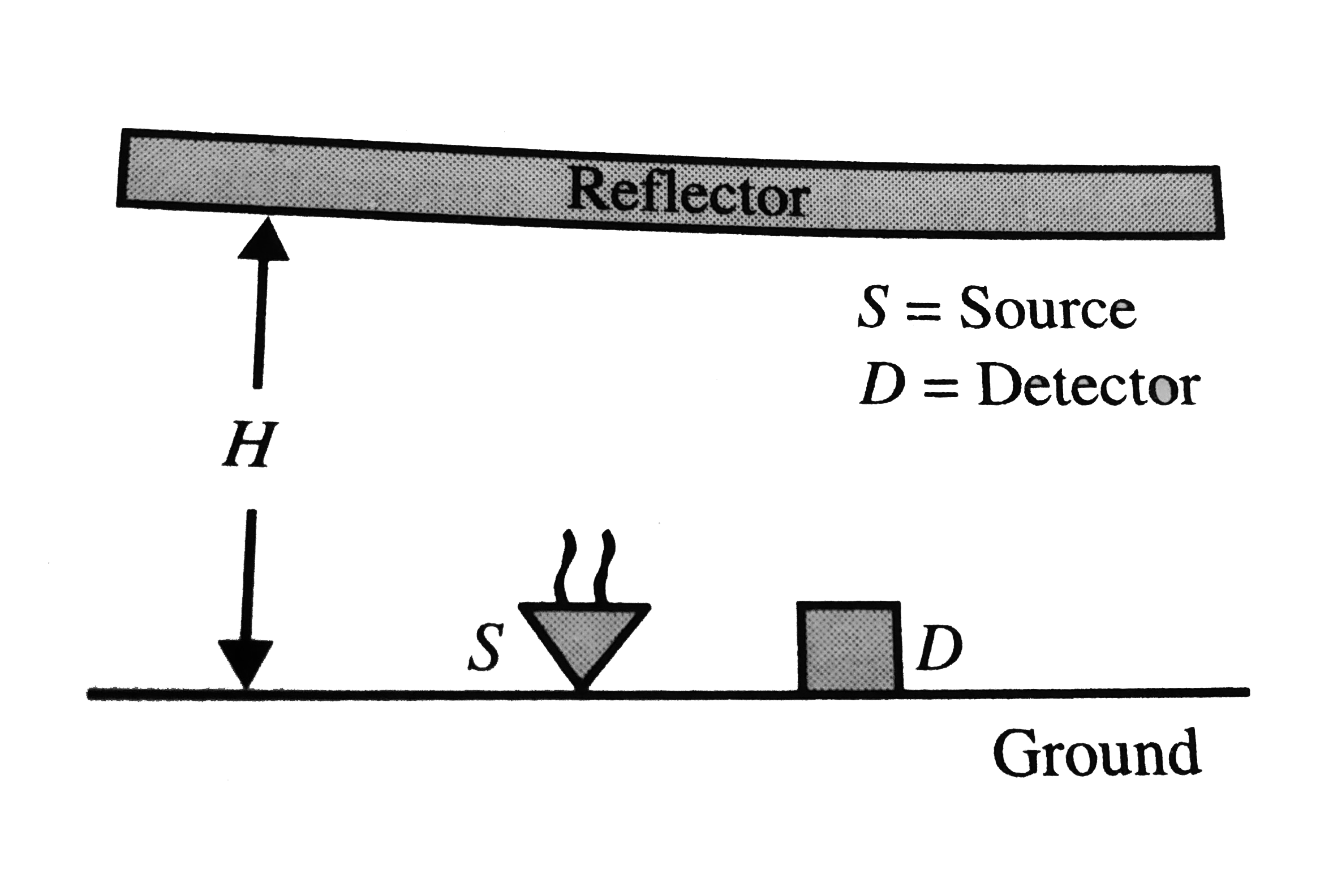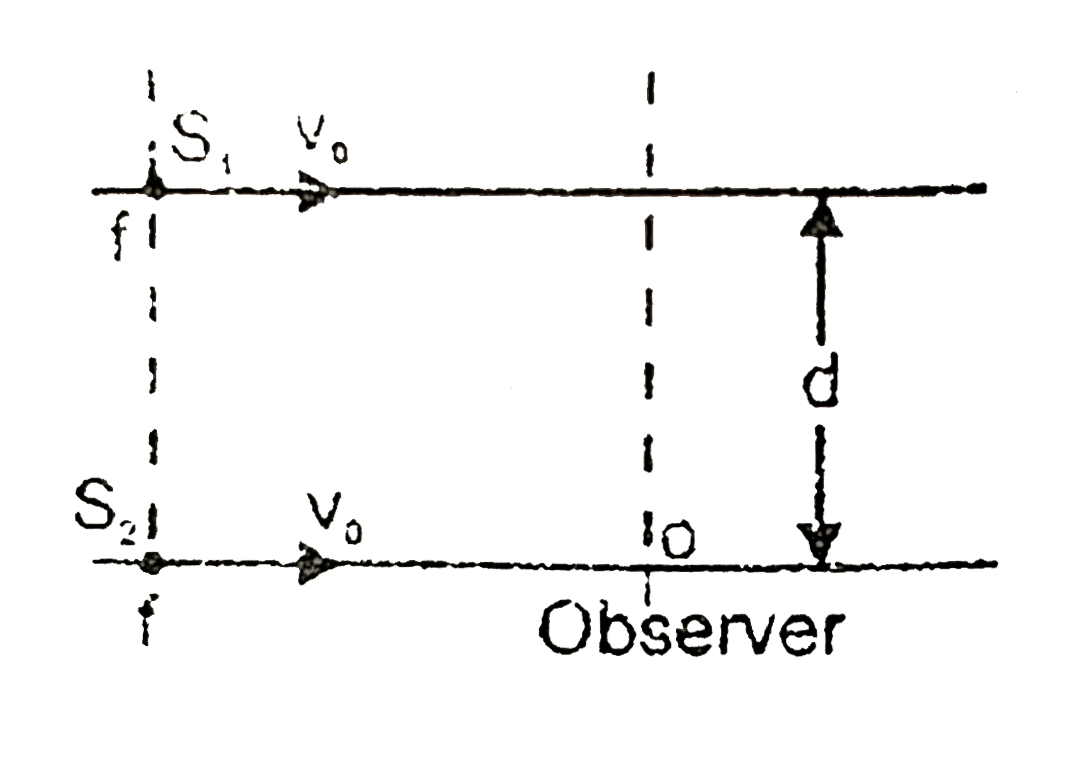Two coherent sound sources A and B produce a sound of wavelength λ. If at t=0 a detector starts moving with constant velocity v0 from point O along y - direction, then the minimum time, after which it detects the sound of maximum intensity, is (D>>λ)

√7Dv0
D3v0
Dv0
√7D3v0
The correct Answer is:D
4λcosθ=3λ
cosθ=34
⇒tanθ=vD
⇒y=√7D3
t=√7D3v0
Topper's Solved these Questions
Similar Questions
A particle of mass m is moving with constant velocity v0 along the line y=b. At time t=0 it was at the point (0,b). At time t=bv0, the

View SolutionA sound source emits waves of frequency f0 and wavelength λ0 in still air. When there is a wind blowing with speed u from left to right what will be wavelength of sound to the right of the source and to the left of the source.
View Solution
Knowledge Check
Two sound sources emitting sound each of wavelength λ are fixed at a given distance apart. A listener moves with a velocity u along the line joining the two suorces. The number of beats heard by him per second is
A2uλBuλCu3λD2λuTwo sound sources emitting sound each of wavelength λ are fixed at a given distance apart. A listener moves with a velocity u along the line joining the two suorces. The number of beats heard by him per second is
A2u/λBu/λCu3λD2λuAn interference is observed due to two coherent sources separated by a distance 5λ along Y-axis, where λ is the wavelength of light A detector D is moved along the positive X -axis The number of point on the X-axis excluding the points x=0 and x=∞ at which resultant intensity will be maximum are
A4B5C∞Dzero

A source of sound and a detector are placed at the same place on ground At t=0, the source S is projected towards reflector with velocity v0 in vertical upward directon and reflector starts moving down with constant velocity v0 At t−0, the vertical separation between the reflector and source is H(>v202g). The speed of sound in air is v(>>v0), Take f0 as the frequency of sound waves emitted by source. Based on above information answer the following questions.
Q. Wavelength of sound waves as received by detector before reflection at t=v02g is
View Solution
A source of sound and a detector are placed at the same place on ground At t=0, the source S is projected towards reflector with velocity v0 in vertical upward directon and reflector starts moving down with constant velocity v0 At t−0, the vertical separation between the reflector and source is H(>v202g). The speed of sound in air is v(>>v0), Take f0 as the frequency of sound waves emitted by source. Based on above information answer the following questions.
Q. Frequency of sound received by detector after being reflected by reflector at t=v02g is
View Solution
A source of sound and a detector are placed at the same place on ground At t=0, the source S is projected towards reflector with velocity v0 in vertical upward directon and reflector starts moving down with constant velocity v0 At t−0, the vertical separation between the reflector and source is H(>v202g). The speed of sound in air is v(>>v0), Take f0 as the frequency of sound waves emitted by source. Based on above information answer the following questions.
Q. Frequency of sound waves emitted by source at t=v02g is
View SolutionTwo identical source moving parallel to each other at seperation 'd' are producing sounds of frequency 'f' and are moving with constant velocity v0. A stationary .observer 'O' is on the line of motion of one of the sources. Then the variation of beat frequency heard by O with time is best represented by: (as they come from large distance and go to a large distance)

View SolutionTwo coherent sources emit light of wavelength λ. Separation between them, d=4λ.

If a detector moves along the y-axis, what is the maximum number of minima observed?
View Solution
